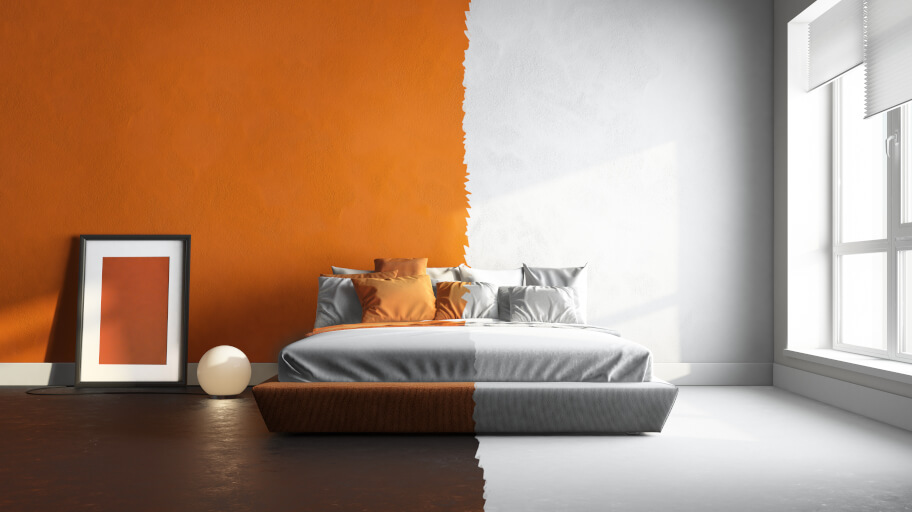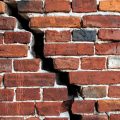
Where there are home renovations, there’s most definitely at least a little bit of chaos. That is especially true, when the time for picking out a paint colour comes. But what if we told you that picking the colour is not the most complex part of repainting?
Those of you who’ve dealt with a remodelling project in the past probably know that there are a lot of other variables to consider, including the type of finish – matte, flat, or eggshell. Those who haven’t – we do get your astonishment. Regardless of which of the two teams you belong to, don’t even think about giving up your repainting project.
Stay with us until the end of this blog post instead!
Why? Well, we are going to share everything there is to know about eggshell paint to make the lives of all homeowners in Australia, or anywhere else, really, a tad easier.
What is eggshell paint?
Let’s get straight to the point. This type of paint comes with a very subtle sheen. And when we say subtle, we mean it, because, as the name suggests, it can be compared to the surface of an egg. The paint may not have too much lustre, but it will still reflect some light. If you are looking for a type of paint that can successfully give depth to a space, without appearing too shiny, this is it. Think of the eggshell paint finish as the lowest lustre option before the matte, flat finish.
There are two types of eggshell paint – latex eggshell paint and eggshell acrylic paint. But what’s the difference between the two?
Acrylic paints are chemical-based and, more often than not, are mainly used for art projects, despite their long-lasting properties. Latex paints, on the other hand, use water as a base. Eggshell water-based paint is frequently used for painting houses because of its quick-drying properties.
As far as shades and eggshell paint colours go, we can safely say that the option comes with no limitations. Being able to choose any colour from the spectrum is impressive, but let’s check for other perks that come with eggshell paint.
Advantages of eggshell paint
Apart from the already mentioned benefits regarding its reflectiveness, eggshell paint can also last long. The protective coat the paint can form makes it possible to last longer than matte or flat finishes.
With lapping being one of the most common painting issues with glossy finishes, it’s important to mention that eggshell paint is just flat enough to ensure that it is not visible. It’s also great how you can take a break then get back to your work without lapping stripes showing up.
Another perk that makes eggshell paint worthy of your attention is its capability to hide surface flaws. While that’s impossible with high gloss paint where imperfections are visible from a greater distance, eggshell paint has just the right amount of matte touch to hide bumps, grooves and pittings.
With all those benefits in mind, there’s just one thing left to discuss – cleaning and maintaining. That’s certainly a question of interest to all, especially those with children at the house. Easy cleaning is, in fact, one of the best things about eggshell painted walls.
The downsides of eggshell paint
Eggshell paint checks almost all boxes, but before we crown it for being one of the best options, we must mention some of its drawbacks. Albeit less expensive than other types of paint, eggshell paint will most likely require a coat to spruce the room up much sooner than satin paint would, for instance.
It is also rather challenging to freshen up the look of the walls just where it’s needed. If there’s a spot that requires touching up, you will most likely have to repaint the entire wall. As for durability, stay tuned as we will make some comparisons with other types of paint in a minute.
How does eggshell differ from other types of paint?
It’s time to compare eggshell and other types of popular paint finishes.
Eggshell paint vs. satin paint
When searching for info on the differences between these two types of paint, you will come across many sources that use the terms “eggshell” and “satin” interchangeably. That is incorrect, because the two have easy-to-spot fundamental differences.
Satin paint finishes have that beautiful lustre that eggshell lacks. Satin does have a better sheen, meaning that it is more reflective and glowy. As for durability, we must admit that satin paint has a longer lifespan than eggshell, making it perfect for high-traffic areas.
Eggshell paint vs. semi-gloss paint
Semi-gloss paints have a glass-like finish when they are dry and therefore are very reflective. They have a higher sheen level than satin and eggshell paint options. The glossier the paint, the more visible imperfections are to the bare eye. So keep that in mind the next time you are torn between eggshell and semi-gloss paint. Also – eggshell paint is not as durable as semi-gloss, but both options are easy to clean and maintain.
Eggshell paint vs. matte paint
Matte and eggshell paints stand pretty close on the spectrum. However, they have their fair share of differences. Eggshell paint has a better sheen than matte paint, meaning that it’s more reflective and gives the room a greater visual depth. Because of their higher lustrous properties, eggshell paints show more imperfections than matte paints that can hide blemishes with just two coats. The eggshell option is also the more durable one of the two.
Eggshell paint vs. flat paint
When it comes to eggshell and flat paint, the main difference between the two come mainly from how well they cover the imperfections on the surfaces. Thanks to its lack of sheen and lustre, flat paint happens to be the better option for the job. It also costs less than eggshell paint and is often a preferred choice for rooms that require additional modifications. On the other hand, as far as durability is concerned, eggshell paint is your best bet.
What is eggshell paint used for?
Repainting is a complex process that requires lots of special attention and consideration. After all, the type of paint you choose will affect the look and the overall mood of the room. It’s finally time to see where eggshell paint stands regarding interior and exterior design.
Eggshell paint on walls
If you are wondering where to use eggshell paint, let us tell you that thanks to its durability, this type of paint works well with medium-traffic areas, such as living rooms and dining rooms. Thanks to the fact that it’s easy to clean and maintain, eggshell paint is a reliable option for playrooms and kids’ bedrooms. It’s quite frankly the go-to choice for any room for families with kids.
Eggshell paint on ceilings
Although it may come as a surprise, eggshell paint is great for painting ceilings. And the reason for that is that it’s the best of both worlds – it has both flat and lustrous properties at the same time, which makes it the perfect combo for a ceiling. You will find that it’s often used to give that monochromatic look where everything – walls, ceilings, and doors – is painted in one colour. Using eggshell paint for your ceilings is both cost-effective and time-efficient.
Is it OK to use eggshell paint on furniture?
All DIY enthusiasts are going to love this – this type of paint is great for furniture pieces. Eggshell paint on wood furniture is a dream come true for those looking for that rustic vintage cottage style finish. With this paint, furniture pieces get that crafty chalk paint look but still have that glow that makes them stand out in the room.
Are you wondering if eggshell paint for kitchen cupboards is a good idea? We advise you to try it out as we are sure that you will love the final result. Eggshell paint can help you achieve a vintage vibe, so if you are into that, don’t hesitate to try it out on your wooden pieces of furniture.
Can eggshell paint be used outside?
There’s an open discussion about this one and you will find plenty of info supporting both sides. Some say eggshell paint works fine for trims around doors and windows, while others disagree. We think it’s best to avoid eggshell paint for surfaces that experience temperature fluctuations or moisture. We advise that you go with a high-gloss finish for outdoor surfaces. Thanks to its durability, it will last longer.
Also, keep in mind that while eggshell paint is good for medium-traffic rooms, it will not hold up to the beating that high-traffic surfaces, like door panels, mudrooms, garage spaces, and others get.
And what about the kitchen you may ask. Eggshell paint will not be your best option for this room. And the reason here is more than obvious – it won’t hold up to all grease splatters.
How to paint with eggshell paint
Prep work is an important aspect when it comes to painting. There’s no need to tell you to take all photographs and accessories down from your walls. However, we must mention how important it is to use joint compounds to fill all holes in the wall. Cover the area around the windows, doorways, and other built-ins with painter’s tape before you start painting.
As for whether primer is necessary or not, our experience shows that it can be of help. Primer can cover stains and imperfections, thus providing better adhesion to the paint. Let it absorb into the surface, and then proceed with painting.
When the compound is finally dry, and the prep work is over, you can start painting. Start with the ceiling before you continue with the walls. It is a good idea to be extra careful to avoid roller marks.
Here are a couple of other helpful painting tips:
- Make sure to get an even amount of paint on all sides of the roller;
- Roll the paint from top to bottom, and avoid rolling it in up-and-down motion so that you don’t get streaks. Apply a second coat if necessary;
- Use a brush and a smaller roller when painting the baseboards and trims;
- As for how long does eggshell paint takes to dry, it’s usually dry in 4-6 hours and ready for you to apply the next coat within 16-24 hours.
To maintain the eggshell paint finish, you will only need two buckets of warm water – one clean and the other with a dishwashing detergent. Use soapy water to remove dirt and stains, and rinse with a second sponge dipped in the clean water.
As for whether painting eggshell over other types of paints is possible, we have a few tips. If the satin paint is still fresh, you can paint over with eggshell straight away. If it’s already been a few weeks since painting the walls with satin, you will need to prep them first with a primer.
However, when we talk about eggshell paint over gloss, it’s advisable to remove the gloss paint first because, otherwise, the eggshell paint may not stick. The same applies to painting eggshell over semi-gloss.
Save time by booking a professional painting service!
Fantastic Handyman Australia can deliver the high-quality results you want.
You can book our handyman services in Melbourne, Sydney, Brisbane and Perth!
Takeaways
- Eggshell paint comes in different colours and is the perfect combination of matte and glossy;
- Eggshell paint is easy to clean and can cover surface imperfections, making it great for medium-traffic areas;
- You can use eggshell paint on different surfaces, including walls, ceilings, and wooden furniture;
- Always roll the paint starting from the top and ending at the bottom to eliminate chances of streaks.


